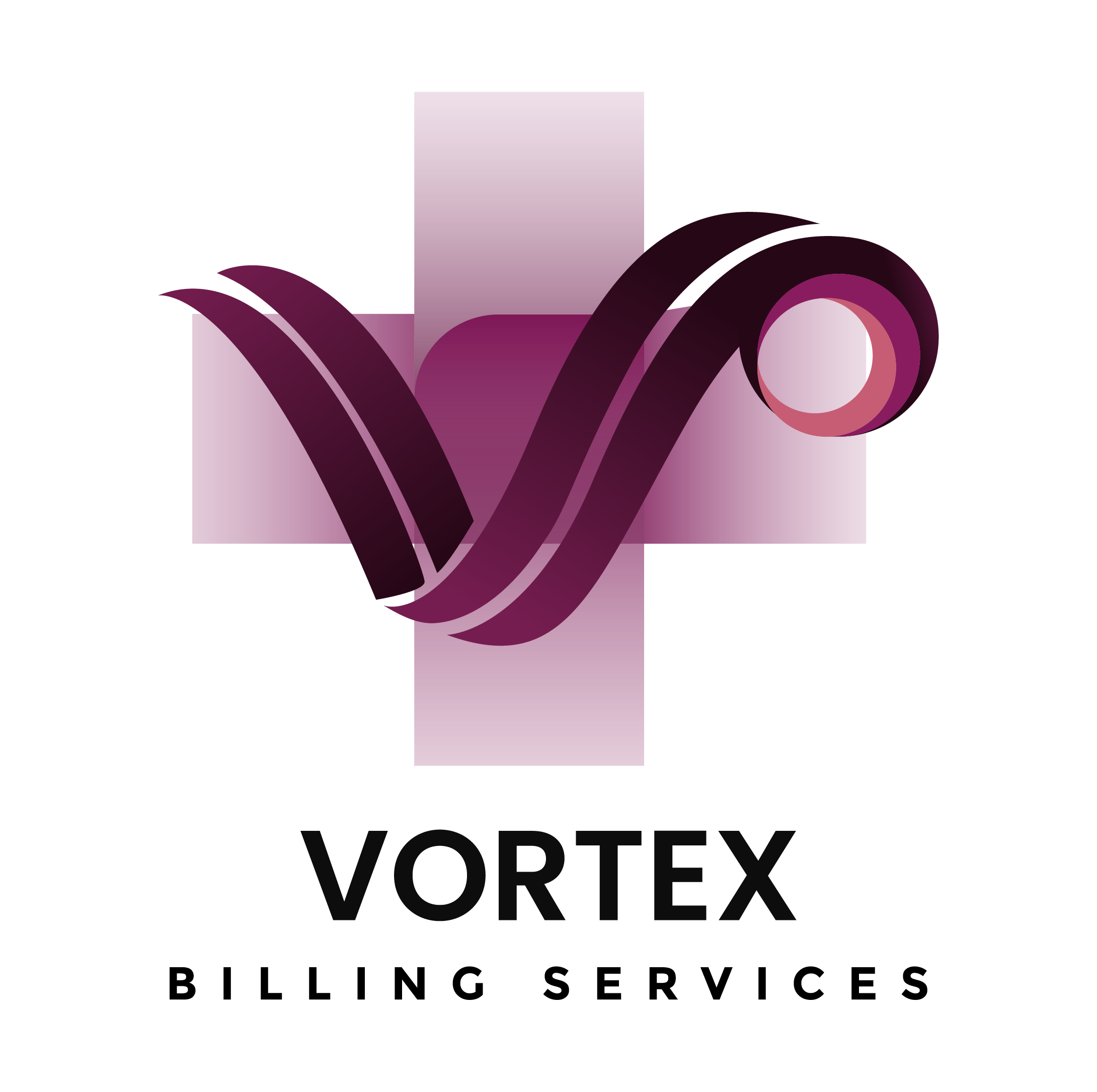Understanding Front-End vs. Back-End Revenue Cycle Tasks in RCM Medical Billing
RCM medical billing is the heartbeat of every healthcare practice in the U.S., ensuring financial sustainability and compliance. But what exactly separates front-end from back-end tasks in this crucial system? The answer lies in timing, responsibility, and direct impact on both patients and revenue. In this article, we’ll break down the entire RCM medical billing process, highlighting how understanding front-end and back-end revenue cycle tasks helps healthcare providers streamline operations, improve reimbursement rates, and remain compliant in an ever-evolving regulatory landscape.
Introduction to RCM Medical Billing
What is RCM Medical Billing?
Revenue Cycle Management (RCM) medical billing refers to the entire process of tracking patient care episodes from registration and appointment scheduling to final payment of a balance. In essence, it’s how money flows into a healthcare organization. Every healthcare provider, from small family practices to sprawling health systems, depends on accurate and efficient RCM medical billing to stay operational.
RCM doesn’t just manage billing. It aligns clinical, administrative, and financial functions into a cohesive system that captures, manages, and collects patient service revenue. By integrating technology and skilled staff, practices can monitor claims, avoid denials, follow up on delayed payments, and ensure patient records are correctly coded and billed. And with healthcare regulations becoming more complex, RCM medical billing ensures that every step—from patient intake to collections—is done in compliance with standards like HIPAA and CMS guidelines.
In the U.S. healthcare market, especially among cost-conscious and compliance-focused providers, mastering RCM medical billing is no longer optional—it’s essential. It enhances transparency, reduces overhead costs, and protects practices from revenue loss, all while improving the overall patient experience.
Importance of Revenue Cycle Management in the U.S. Healthcare Industry
In a country where healthcare expenses are among the highest globally, revenue cycle management is not just about billing—it’s about survival. A well-structured RCM medical billing system ensures that every dollar earned for services provided is captured, billed, and collected efficiently.
Medical practices in the U.S. face mounting challenges, including rising operational costs, reduced reimbursements, and evolving regulatory pressures. Proper RCM systems help them stay compliant, optimize workflows, and free up providers to focus on patient care rather than billing headaches. More importantly, it bridges the gap between front-office responsibilities and back-office execution—making sure that no step in the financial journey is overlooked.
By using smart RCM medical billing strategies, healthcare providers can turn administrative burdens into predictable, trackable revenue streams, and that’s a game-changer in today’s hyper-competitive market.
Breaking Down the Revenue Cycle
Overview of the Healthcare Revenue Cycle
Think of the healthcare revenue cycle as a loop rather than a straight line. It starts when a patient books an appointment and ends when all claims are resolved and payments are collected. But within that loop, multiple moving parts must work in sync.
Here’s a basic breakdown of the RCM medical billing revenue cycle:
- Pre-Visit: Patient scheduling, eligibility verification, prior authorization.
- Point-of-Service: Co-payment collection, documentation of services rendered.
- Post-Visit: Coding, claims submission, insurance adjudication, payment posting, and appeals.
Each stage depends on the accuracy and efficiency of the previous step. One small error—like incorrect patient info or missing insurance details—can snowball into denied claims, delayed payments, or compliance penalties. That’s why separating the revenue cycle into front-end and back-end tasks is so crucial—it clarifies roles and responsibilities and strengthens every link in the financial chain.
Role of Technology and Automation in Modern RCM Medical Billing
Modern RCM medical billing isn’t just about paperwork and spreadsheets anymore. It’s a data-driven, tech-enhanced process powered by tools like EHRs (Electronic Health Records), practice management systems, automated claim scrubbing tools, and AI-driven analytics.
Automation allows healthcare providers to:
- Instantly verify patient eligibility
- Auto-generate accurate codes based on clinical documentation
- Flag potential billing errors before claims are submitted
- Track payment statuses in real-time
This minimizes human error, speeds up processing, and improves reimbursement timelines. For U.S.-based practices, especially those in competitive urban markets or with high patient volumes, investing in RCM medical billing technology is no longer a luxury—it’s a strategic necessity. It boosts accuracy, ensures regulatory compliance, and delivers better financial outcomes with less manual effort.
What are Front-End Revenue Cycle Tasks?
Patient Registration and Scheduling
Front-end RCM medical billing begins with the patient’s first point of contact—registration and scheduling. This might seem routine, but it’s one of the most critical stages in the revenue cycle. Why? Because every error here trickles down the pipeline, often resulting in claim rejections or delays.
Accurate patient registration includes:
- Collecting full demographic details
- Verifying insurance information
- Capturing consent forms and necessary authorizations
- Scheduling appointments with correct provider and service codes
This is also the point where front-desk staff must ensure the patient understands what services are covered and what they’re financially responsible for. Miscommunications here can lead to confusion, surprise bills, and patient dissatisfaction.
Efficient registration systems, often integrated with EHR platforms, automate many of these steps and ensure that all required data points are captured at the outset. In fact, improving registration accuracy alone can reduce claim denials by over 30%, according to several U.S.-based RCM medical billing studies.
Insurance Verification and Pre-authorization
Accurate insurance verification and prior authorization are the backbone of successful front-end RCM medical billing. These steps, when handled properly, significantly reduce the chances of denied or delayed claims. And in the U.S., where insurers have strict policies on coverage, overlooking verification details can become a costly mistake.
Insurance verification ensures that the patient’s insurance is active, the services are covered, and the practice is within the insurer’s network. This includes:
- Confirming patient eligibility
- Understanding co-pay and deductible details
- Checking out-of-pocket limits
- Confirming service coverage limits
Pre-authorization, on the other hand, involves getting prior approval from insurers for specific procedures, diagnostics, or treatments. Without this, even valid claims may be denied outright.
By using automated verification tools integrated into EHR and RCM platforms, practices can drastically reduce the administrative burden and speed up approvals. Automating this task also improves patient trust—when patients know upfront what’s covered, they’re more likely to proceed with care and pay their share.
In short, solid verification and pre-authorization protocols in RCM medical billing not only protect revenue but also foster patient satisfaction and transparency.
Financial Counseling and Patient Education
In today’s high-deductible healthcare landscape, U.S. patients are more financially involved in their care than ever before. That’s why front-end RCM medical billing must include financial counseling and patient education as part of the process.
The financial counselor’s role is to:
- Clearly explain insurance benefits and financial responsibilities
- Offer payment plan options if needed
- Provide cost estimates before treatment
- Educate patients about billing timelines and methods
This open dialogue sets expectations early, helps avoid patient confusion or dissatisfaction, and reduces the risk of unpaid balances later in the billing cycle.
For practices targeting cost-effective, technology-driven RCM medical billing solutions, incorporating digital tools like patient portals, mobile payment options, and pre-service estimates makes financial communication faster and more effective. When patients feel informed and respected, it improves trust—and paid invoices follow trust.
Effective financial counseling not only boosts collection rates but also improves your reputation and patient retention in an increasingly competitive healthcare environment.
What are Back-End Revenue Cycle Tasks?
While front-end tasks prepare the ground, back-end RCM medical billing ensures that payments are collected accurately and efficiently. This is where all the hard work translates into revenue. Back-end processes begin after the patient encounter and continue until the final dollar is collected or written off.
Back-end tasks include:
- Medical coding
- Charge entry
- Claim submission
- Payment posting
- Denial management
- Appeals and collections
These stages require technical accuracy, a deep understanding of payer rules, and compliance expertise. Even a single incorrect CPT code or mismatched modifier can result in denials or underpayments.
Back-end teams also need to stay current on U.S. payer policies, compliance requirements, and changes in billing regulations. When these tasks are optimized, providers see faster reimbursements, fewer denials, and stronger financial performance.
Let’s now dive into the three critical components of back-end RCM medical billing, starting with medical coding and charge entry.
Medical Coding and Charge Entry
Medical coding is the process of translating clinical notes and treatments into standardized billing codes (CPT, ICD-10, HCPCS) used for insurance claims. Charge entry, meanwhile, involves inputting these codes and associated charges into the billing system.
Inaccurate coding is one of the leading causes of claim denials in the U.S., so precision here is non-negotiable.
The coding and charge entry phase includes:
- Reviewing physician documentation for accuracy
- Assigning correct diagnostic and procedural codes
- Linking codes to appropriate charges
- Flagging incomplete or ambiguous documentation
Experienced coders must be familiar with specialty-specific billing rules, payer requirements, and updates from CMS and private insurers. Many U.S. providers now use AI-assisted coding tools, which reduce human error and improve coding speed.
Coding isn’t just a back-end task—it’s a financial lifeline. When done correctly, it ensures accurate claim submissions, optimizes reimbursement, and minimizes compliance risk. And with the shift to value-based care models, correct coding also contributes to better quality reporting and population health management.
Claims Submission and Follow-Up
Once services are coded and charges entered, the next step in back-end RCM medical billing is submitting the claim to the payer—and following up to ensure it’s paid.
The claims submission and follow-up process includes:
- Electronic claim creation (837 format)
- Claim scrubbing for errors
- Submission to payers via clearinghouses
- Monitoring adjudication timelines
- Identifying delayed, denied, or underpaid claims
- Proactively resolving issues with payers
Timely claims submission is vital to maintaining cash flow. Most payers in the U.S. operate on strict claim filing windows—missing these windows means lost revenue. That’s why automation plays a key role here. Modern RCM platforms flag missing fields, identify under-coded services, and track claim status in real-time.
Follow-up is equally important. U.S. healthcare practices lose billions annually to uncollected or incorrectly adjudicated claims. A dedicated RCM team should monitor every claim until it’s paid in full—or accurately appealed. This persistence ensures that services provided are appropriately reimbursed.
By optimizing claim submission and follow-up processes, practices can maintain steady cash flow, reduce AR days, and operate more predictably in a volatile healthcare economy.
Payment Posting, Denial Management, and Appeals
Once a claim is processed and payment is received, the final stages of back-end RCM medical billing come into play: payment posting, denial management, and appeals. These processes ensure that providers receive the correct amount and help identify gaps or issues in the billing workflow.
Payment posting is the act of recording payments from payers and patients into the billing system. It helps in:
- Tracking paid, underpaid, or unpaid claims
- Reconciling deposits with explanation of benefits (EOBs)
- Identifying patterns in payer behavior (delays, short-pays, etc.)
Denial management focuses on identifying the reasons for claim rejections or denials. Common denial reasons include:
- Missing or incorrect codes
- Lack of documentation
- Policy exclusions
- Authorization issues
RCM medical billing teams must analyze these trends and adjust front-end processes to prevent future denials. This continuous improvement cycle is essential in the U.S. medical billing landscape, where payer rules frequently shift.
Appeals are formal processes to contest denied or underpaid claims. Skilled RCM staff craft compelling appeals with documentation, medical necessity justification, and payer-specific language to recover lost revenue.
A robust payment posting and denial management process is critical for financial health. It provides clarity on cash flow, highlights training opportunities, and drives corrective action to reduce revenue leakage.
Key Differences Between Front-End and Back-End RCM Medical Billing Tasks
Understanding the distinction between front-end and back-end tasks in RCM medical billing isn’t just academic—it’s essential to operational efficiency. These two segments may function separately, but they rely heavily on each other for the system to work seamlessly.
Here’s how they differ:
Timing and Interaction Points
- Front-end tasks occur before the patient visit or at the time of service.
- Back-end tasks begin after the patient encounter and continue until full payment.
Administrative vs. Technical Focus
- Front-end involves direct interaction with patients (registration, insurance, education).
- Back-end is data-driven and technical, dealing with coding, claims, payments, and follow-up.
Impact on Revenue
- Errors in the front-end often lead to back-end delays or denials.
- Inaccuracies in the back-end can stall cash flow and inflate A/R days.
Successful medical practices in the U.S. recognize these differences and invest in training, technology, and workflow strategies that improve coordination between both ends. The better these departments communicate, the smoother and faster the revenue cycle moves—resulting in faster payments, fewer denials, and higher patient satisfaction.
Challenges Faced in RCM Medical Billing
Even with sophisticated tools and trained staff, RCM medical billing is far from foolproof. Healthcare providers across the U.S. encounter a wide range of challenges that threaten efficiency and revenue.
Compliance with U.S. Regulations
The U.S. healthcare landscape is one of the most heavily regulated. RCM billing must comply with:
- HIPAA for patient privacy
- CMS billing guidelines
- Payer-specific contract rules
Failing to meet these standards can lead to audits, fines, and reputational damage.
Handling Claim Denials and Rejections
Even one denied claim can delay payment by weeks. Multiply that by dozens per month, and it snowballs into major cash flow issues. Denial management requires:
- Root cause analysis
- Documentation correction
- Timely resubmissions
Staff Training and Workflow Integration
Many practices rely on outdated systems or lack RCM expertise. Without proper staff training and aligned workflows, errors increase and efficiency plummets.
To stay competitive in the U.S. RCM medical billing marketplace, providers must prioritize ongoing staff education, regular compliance audits, and seamless integration between front-end and back-end functions.
Importance of Seamless Coordination Between Front-End and Back-End
Too often, front-end and back-end teams operate in silos. But the most successful RCM medical billing operations in the U.S. function like a well-rehearsed orchestra—every part contributing to the final performance.
Reducing Errors and Revenue Leakage
A misstep in registration can lead to coding errors, which lead to claim denials. But if front-end and back-end teams collaborate, they can catch issues early and correct them before claims go out.
Improving Reimbursement Timelines
Tight coordination means fewer denials, faster corrections, and improved turnaround times. The result? Steadier revenue streams and lower days in accounts receivable.
Enhancing Overall Patient Satisfaction
Patients hate surprise bills. Seamless communication between billing teams ensures patients are informed from the start, leading to better trust and long-term retention.
In a healthcare climate driven by value, transparency, and efficiency, seamless coordination between the front-end and back-end isn’t a bonus—it’s a necessity.
RCM Medical Billing Solutions in the U.S. Market
With growing complexity in regulations and billing processes, many U.S. healthcare providers are turning to specialized RCM medical billing solutions to handle the entire revenue cycle. Choosing the right solution can mean the difference between operational efficiency and financial instability.
Outsourcing vs. In-House Billing
In-house billing gives providers direct control, but it also demands substantial resources—technology, trained staff, and time. Outsourcing to an RCM medical billing company offers:
- Access to expert coders and billers
- Lower overhead costs
- Built-in compliance systems
- Faster reimbursement cycles
For small and medium-sized practices, outsourcing often proves more cost-effective and scalable, especially during growth phases or regulatory changes.
Choosing Technology-Driven Partners
Technology is a non-negotiable. The best RCM partners use tools like:
- Cloud-based EHR integrations
- Automated claim scrubbing
- Real-time eligibility verification
- Analytics dashboards for revenue insights
These systems reduce manual errors and streamline operations from registration to final payment.
Evaluating Cost-Effectiveness and Transparency
Providers must assess the ROI of any RCM solution. Transparent pricing models, clear performance metrics, and proven track records are essential in choosing a reliable partner. Look for vendors who offer performance guarantees, audit support, and dedicated account managers for optimal collaboration.
Compliance and Accuracy in RCM Medical Billing
Compliance isn’t just about avoiding penalties—it’s about building a trustworthy, sustainable medical practice. RCM medical billing must adhere to strict U.S. healthcare laws, which continue to evolve.
HIPAA, CMS, and Other Key Regulations
- HIPAA ensures patient data privacy; violations carry steep fines.
- CMS governs Medicare/Medicaid billing; errors can trigger audits or claim retractions.
- OIG (Office of Inspector General) guidelines focus on fraud and abuse prevention.
Every element of billing—documentation, coding, communication—must align with these laws.
Data Security and Audit Readiness
RCM platforms must be built with encrypted storage, secure login protocols, and audit logs. In the event of a payer audit or CMS review, having structured, accessible records ensures faster resolution and fewer penalties.
Regular Updates and Continuing Education
Rules and codes change regularly—ICD updates, modifier rules, payer-specific changes. RCM teams must receive ongoing training and subscribe to updates from CMS, AMA, and major insurance carriers.
Practices that treat compliance as an ongoing investment, not a one-time checklist, are best positioned for long-term success.
How New and Expanding Practices Can Benefit from RCM Medical Billing
Starting or growing a practice in the U.S. healthcare market is exciting but financially risky without proper RCM processes in place. RCM medical billing gives new and expanding clinics the tools they need to grow responsibly and profitably.
Scaling Efficiently with Expert Support
Startups often lack the internal infrastructure to manage billing. By outsourcing to expert RCM providers, new practices can avoid pitfalls like:
- Delayed reimbursements
- Missed compliance steps
- Poor patient billing experiences
With scalable billing solutions, providers can handle increasing patient volumes without sacrificing accuracy or compliance.
Focusing on Patient Care Over Admin Tasks
The more time spent on billing tasks, the less time providers have for patients. RCM medical billing systems handle the complexity so physicians can focus on what they do best—delivering care.
Additionally, clean and transparent billing builds patient trust, essential for long-term retention and word-of-mouth growth. When patients are happy and revenue is flowing, your practice can scale confidently.
Conclusion
Understanding the distinct roles of front-end and back-end revenue cycle tasks is crucial to mastering RCM medical billing. In the U.S. healthcare system, where every dollar counts and compliance is king, medical practices must align operations, technology, and training to create a seamless, efficient revenue flow. From patient registration to final payment posting, each step in the revenue cycle matters. Whether you’re a small practice looking to grow or a large provider aiming to reduce denials, investing in coordinated, compliant RCM medical billing processes will lead to stronger financial outcomes, happier patients, and a more sustainable future in healthcare.



